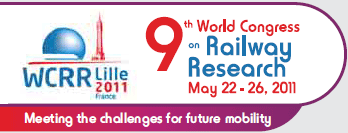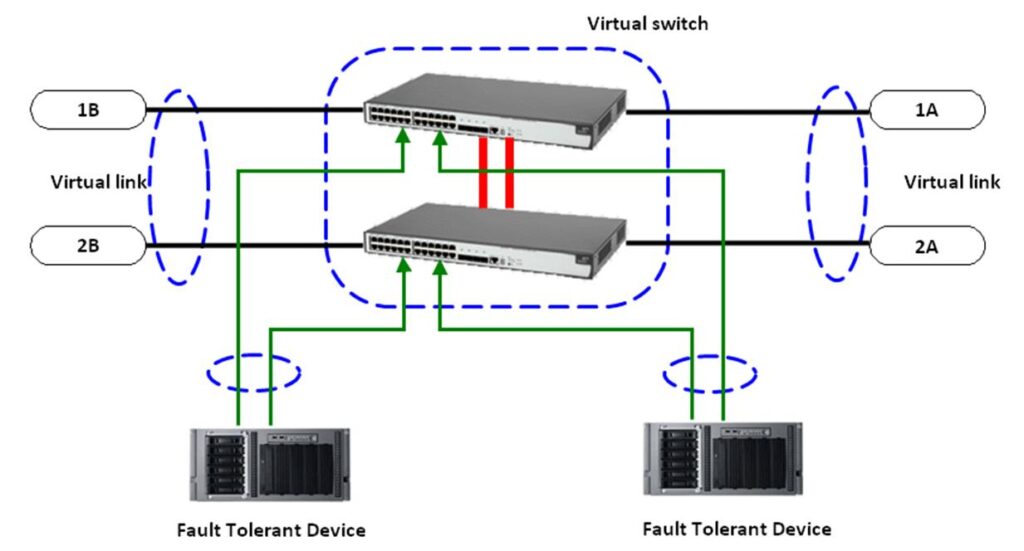A solution for deployment also on the existing high speed train fleets.
Antonio Ghelardini, Andrea Gatti, David Russo and Paolo Masini – Trenitalia, Direzione Tecnica – Firenze
This paper was presented at the WCRR2011 (World Congres on Railway Research 2011)

Introduction
In the last 10 years, Ethernet based technologies, based on IEEE 802.1 and 802.3 specification families, were spreading in industrial environments to fulfill data exchange requirements between computer assisted tools and systems. Internet access requirements led to the widespread use of TCP/IPv4 protocol to fully fulfill every user data exchange needs.
Objective
Trenitalia did some research efforts to develop Ethernet based networks suited for the on board train harsh environment. Trenitalia also identified the main technical challenges to deal with such sophisticated mobile local area network:
- fault tolerant local area network
- topology constraints due to train architecture
- data cabling requirements due to very strict fire-flames rules (CEI 11170)
- data connector housing requirements for on-board in-vehicle and between-vehicles links
- data connector requirements for on-board railway operations (mechanical vibrations and wide temperature range)
- strict latency and jitter application level response time and synchronization issues
Method
After some prototype testing, Trenitalia was able to identify exactly the train network technical requirements: a fully switched Ethernet network with standard IEEE 802.1Q (Vlan and QoS) features. After some developing efforts, Trenitalia specially tuned two building blocks to address the main technical challenge: develop a fault tolerant network. Two very advanced Ethernet technologies were borrowed directly from the latest high availability data centers designs: the logical switch and the logical link.

From the Ethernet point of view, the logical switch (also referred as virtual switch) is a single logical device physically made by two or more different equipment sharing their switching tables. Logical switches support “cross-stack” logical links. Logical links are made with two or more parallel physical connections between the same two devices. Logical links are also referred as trunk or aggregated links, with the latter automatically managed by the IEEE802.3ad-2000 LACP protocol. Trenitalia decided to deploy a full scale train network topology laboratory to deeply evaluate and investigate a very specialized extended star topology. A network with a series of 13 logical switches, connected one after the other, was build using only logical links between devices. Train architecture topology constraints were specially addressed with a “no single point of failure and no single vehicle point of failure” network meshed architecture. Ethernet topology requirements (only star or extended star are allowed) were addressed with fine tuning of MSTP protocol between logical links.
Results
Trenitalia was finally able to demonstrate a working fault-tolerant full train network. Very high data rates streaming flows were used to test the network, even with the use of very specialized industry standard deterministic traffic generators as the Ixia IxChariot tools. A highly specialized cabling scheme for vehicles was developed with the use of two identical jumpers between coaches.
Extensive market research addressed the high quality data rate cabling requirements for on-board installations: CEI 11170 cat.7 fully shielded cables with 4 single-shielded pairs were selected to meet UNI 11801 Class F requirements. High quality data connector with their specially designed housing were found in the aero-space related market.
Low latency and jitter requirements as well as network bandwidth management led to a fully switched train network with standard IEEE 802.1Q (Vlan and QoS) features.
Discussion
For new designs the goal was achieved with a specialized high performance solution: a dual-Gigabit Ethernet Fault Tolerant Train Network as stated in Trenitalia Technical Document # 375590 and proposed by Trenitalia as a Gigabit Ethernet standard solution in July 2008 IEC TC9 WG43 and WG46 meeting.
Trenitalia also deeply investigated for a solution for her current high speed fleets (the ETR500 and the ETR485). Unfortunately Trenitalia Technical Document #375590 solution was not possible due to the lack of specialized high speed grade data cabling.
Therefore, a new network design was developed, even if constrained by being compliant with existing maintenance cycles. This solution was mandatory to avoid the forced consistent unavailability needed to deploy the new services on existing fleets and to short its deployment time.
The new design was almost the same as in 375590, even if a little downsized in terms of backbone capacity, in order to be fitting in existing trains with existing dual parallel coaxial cabling availability: a Dual Fast Ethernet fault tolerant train network was developed thoroughly re-using existing coaxial cabling (that were used for passenger Public Announce service), without re-wiring coaches with specialized high speed data cabling. Trenitalia research efforts led to the developing of a specialized Ethernet Over Coax media converter, so filling the IEEE 802.3 standard gap for a switch to switch fast Ethernet full duplex physical solution over coax. The EOC converters were made by CableVision and designed under strict Trenitalia specification to behave as simple patch cables to get coaxial based channels IEEE 802.3ad LACP compliant.
Conclusion
Trenitalia presented this network architecture during the November 2010 IEC TC9 WG43 and WG46 meeting and demonstrated a working logical link between two logical switches made of a LACP aggregation of a patch cable and a coaxial based channel. A small network test setup was also demoed showing the network recovery time during cabling and device faults.
The ETR500 and ETR485 fleets have a dual parallel coaxial cabling to support an analog Onboard Public Announce and passenger related voice service. So it was replaced with a high quality digital Voice Over IP based Onboard Public Announce and passenger related voice service.
Lot of efforts were invested in designing logical switch and VOIP equipment in less volume space than the old voice devices and with a total lower power budget. Existing coaxial cables were carefully checked up to 250 MHz with DTX-Coax adapters for the Fluke DTX-1800 cable tester. A prototype train (ETR500-025) was so upgraded in January 2011 in less than 24 hours, so demonstrating a very aggressive deploying scheduling time (less than an year for the whole fleet) and the project compatibility with existing maintenance cycles.
The on-board local area network was fully and deeply tested during normal commercial services to demonstrate that it worked like a standard commercial Ethernet network.
The availability of a standard and high performance fault tolerant train Ethernet network will become the preferred data exchange infrastructure to deploy new services. It will be able to transfer not only typical dedicated railway data (i.e C&C and maintenance), but also new passenger multimedia services, even on existing fleets without re-wiring coaches with specialized high speed data cabling.
